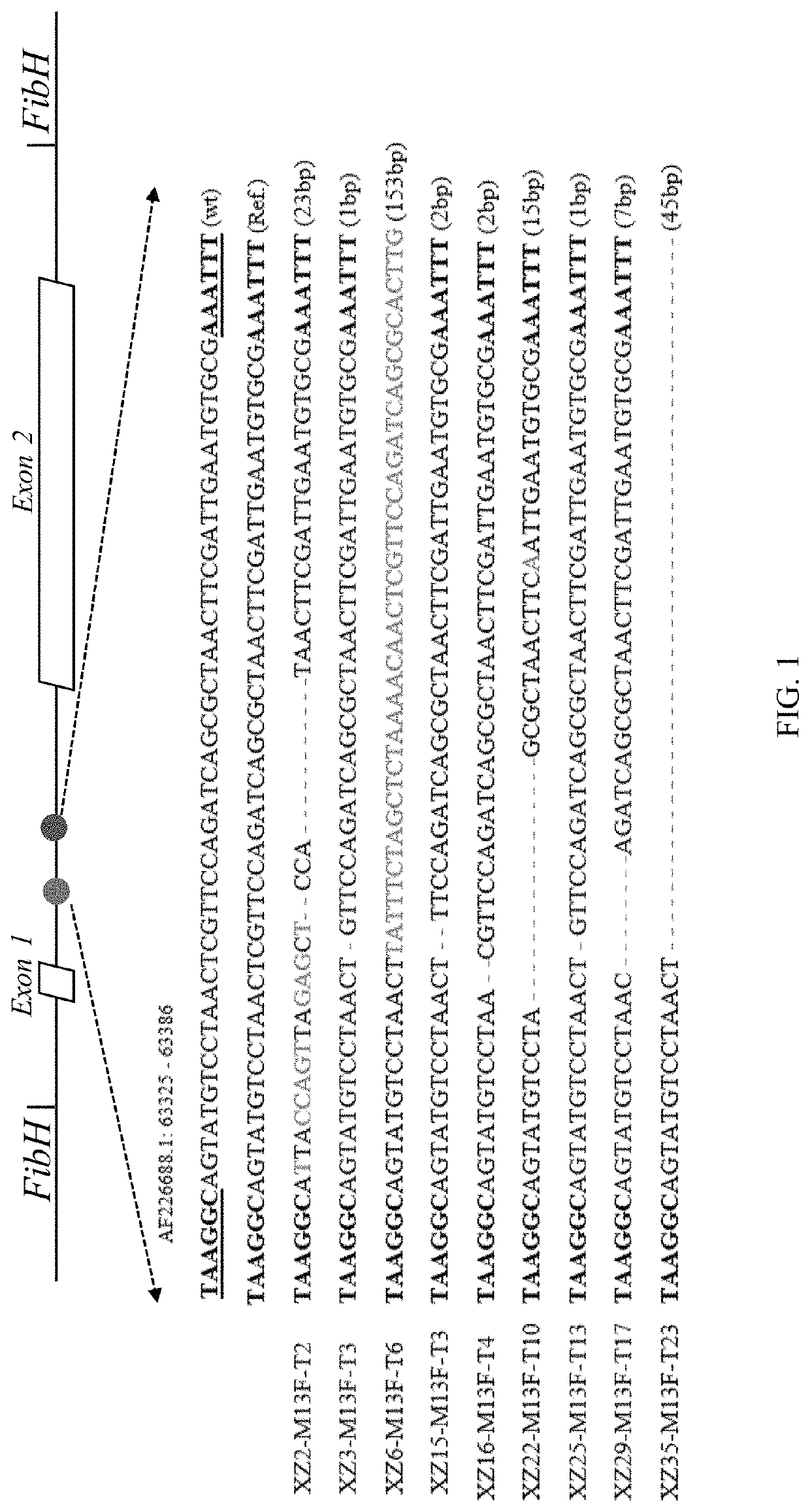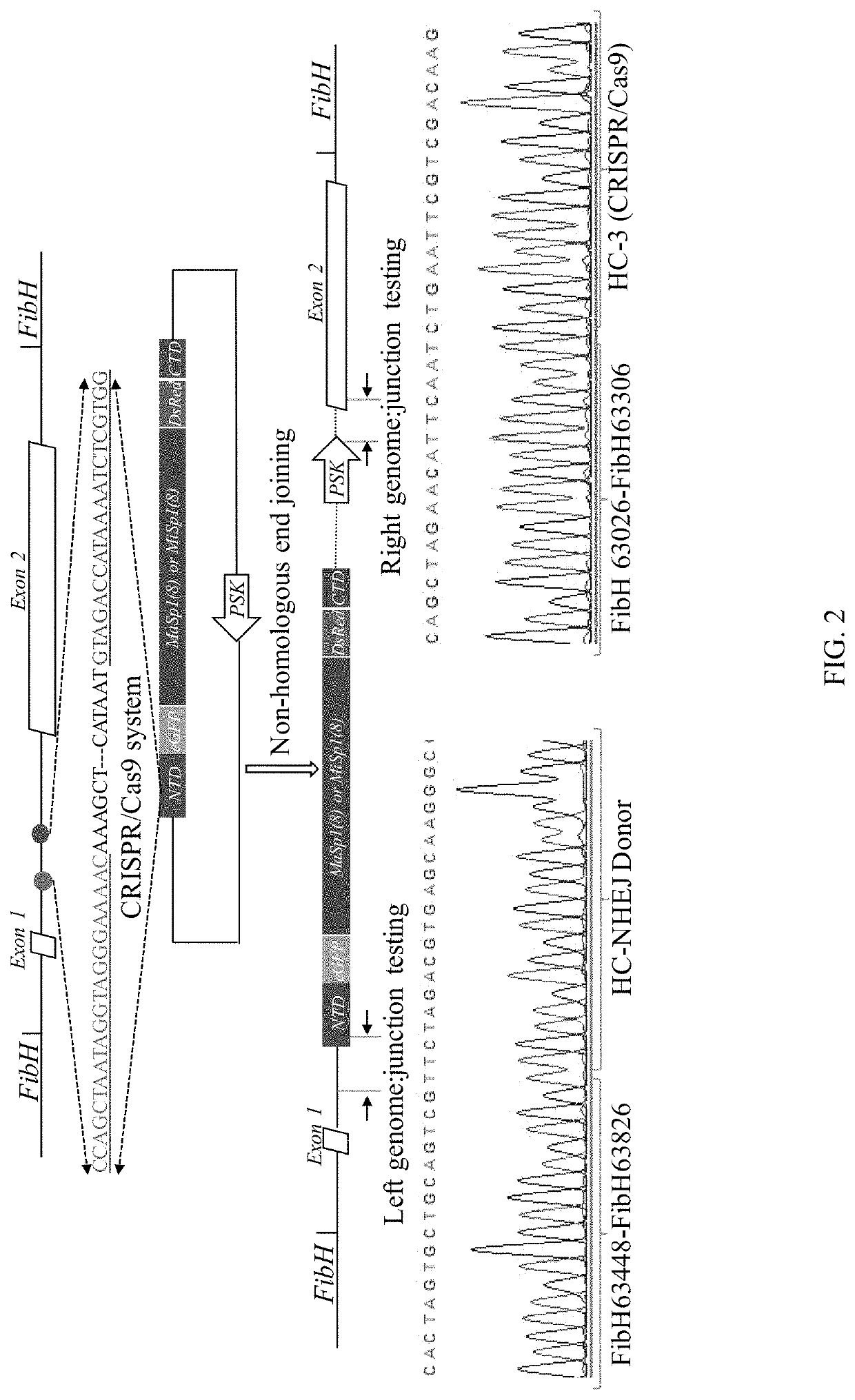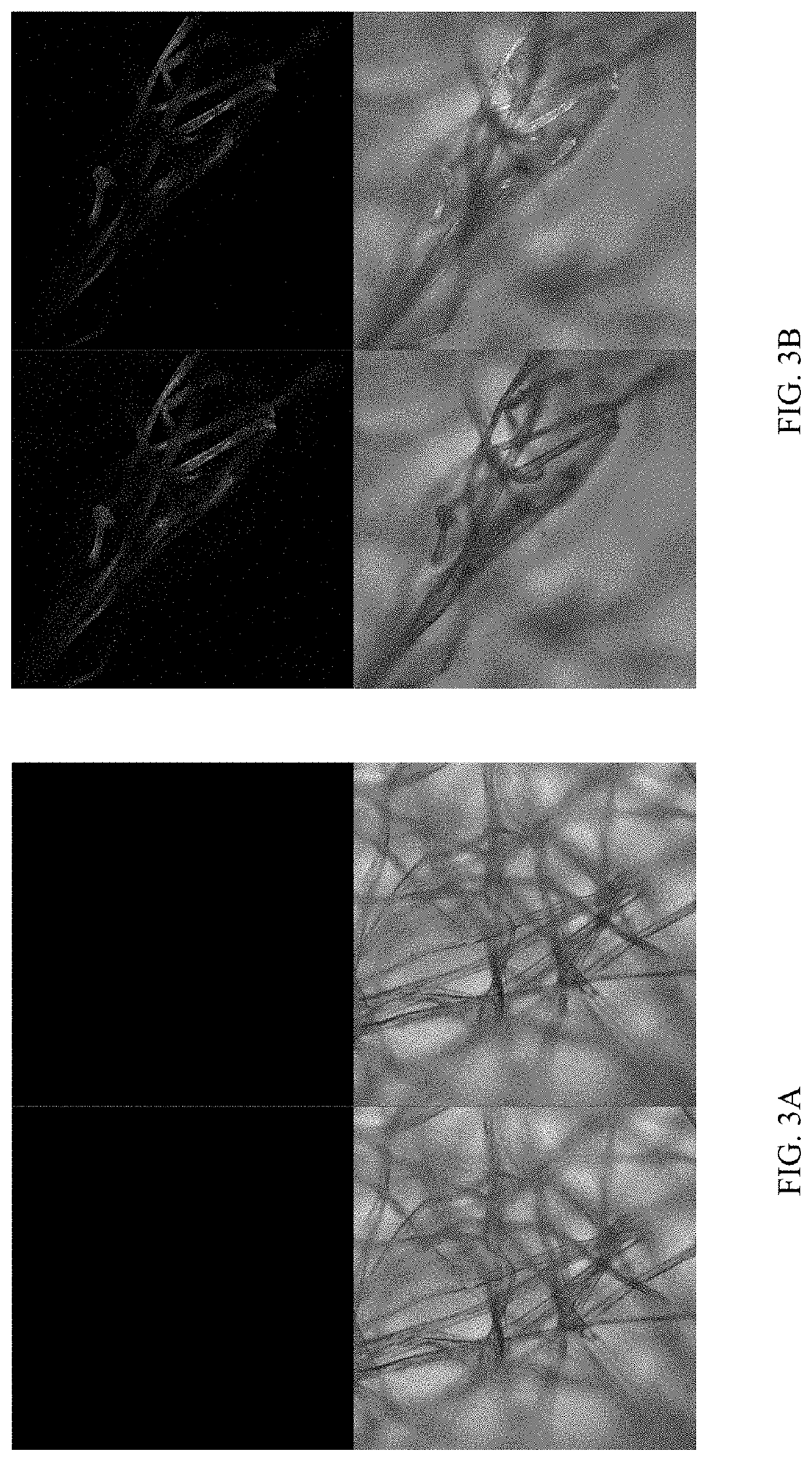Transgenic silkworms expressing spider silk
a technology of silkworms and spider silks, applied in the field of transgenic silkworms, can solve the problems of low expression levels, spider silks cannot be raised on a large-scale to meet the demand of commercial applications, and fibers are not as strong as natural spider silks
- Summary
- Abstract
- Description
- Claims
- Application Information
AI Technical Summary
Benefits of technology
Problems solved by technology
Method used
Image
Examples
example 1
lk Transgenes in FibH Intron
[0076]Using the silkworm-specific CRIPSR / Cas9 system, two relatively large synthetic spider silk genes, the major ampullate spider silk gene (MaSp1, ˜10 kb) and the minor ampullate spider silk gene (MiSp1, ˜10 kb) of N. Clavipes were separately introduced into the only intron of the silkworm FibH gene. An optimized silkworm-specific CRISPR / Cas9 system was used with NHEJ. Expression was driven by the endogenous FibH promoter in the transgenic silkworm glands to improve yields and ensure genetic stability.
[0077]Construction of Cas9 and sU6 gRNA Expression Vectors for Silkworm.
[0078]To ensure the CRISPR / Cas9 system was well expressed in BmN cells and / or silkworms, the coding region of cas9 was constructed into a pIE-1 vector under the hr5 enhancer and IE1 promoter.
[0079]To construct the expression vector of Cas9 in silkworms, the coding region of Cas9 was excised from Px330-U6-Chimeric BB-CBh-hSpCas9 (Addgene plasmid #42230) with AgeI and NotI (NEB, R3552S a...
example 2
lk Transgenes in FibL Intron
[0141]To improve the mechanical properties of transgenic silkworm / spider fibers, a synthetic spider silk MaSp1 (172 kDa) gene was incorporated at the genetic locus of the fibroin light chain (FibL) in silkworms by CRIPSR / Cas9 initiated non-homologous end joining (NHEJ). Double strand breaks (DSBs) were created at the sixth intron of the fibroin light chain gene using an optimized CRISPR / Cas9 system. An exogenous spider silk protein MaSp1 was fully expressed under control of the endogenous FibL enhancer and promoter. The resulting transgenic silkworm / spider fibers demonstrated superior mechanical properties in both the first and second generations (G1), indicating genetic stability of the transgenic silkworms.
[0142]Design of the CRISPR / Cas9 System.
[0143]Two gRNAs (g5 and g6) were designed to target the 6th intron of fibroin light chain (FibL) of silkworm gland (Table 8), showing gRNA target sites in the LC-NHEJ project. The gRNAs were sub-cloned into the p...
PUM
| Property | Measurement | Unit |
|---|---|---|
| stress | aaaaa | aaaaa |
| pH | aaaaa | aaaaa |
| molecular weights | aaaaa | aaaaa |
Abstract
Description
Claims
Application Information
 Login to View More
Login to View More - R&D
- Intellectual Property
- Life Sciences
- Materials
- Tech Scout
- Unparalleled Data Quality
- Higher Quality Content
- 60% Fewer Hallucinations
Browse by: Latest US Patents, China's latest patents, Technical Efficacy Thesaurus, Application Domain, Technology Topic, Popular Technical Reports.
© 2025 PatSnap. All rights reserved.Legal|Privacy policy|Modern Slavery Act Transparency Statement|Sitemap|About US| Contact US: help@patsnap.com



